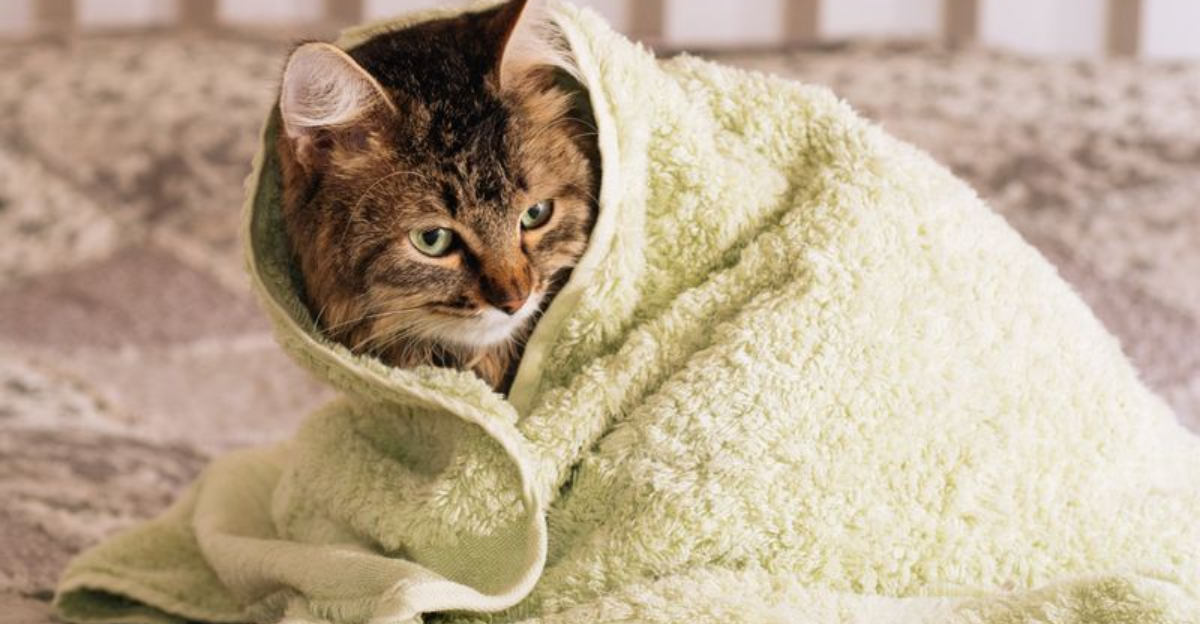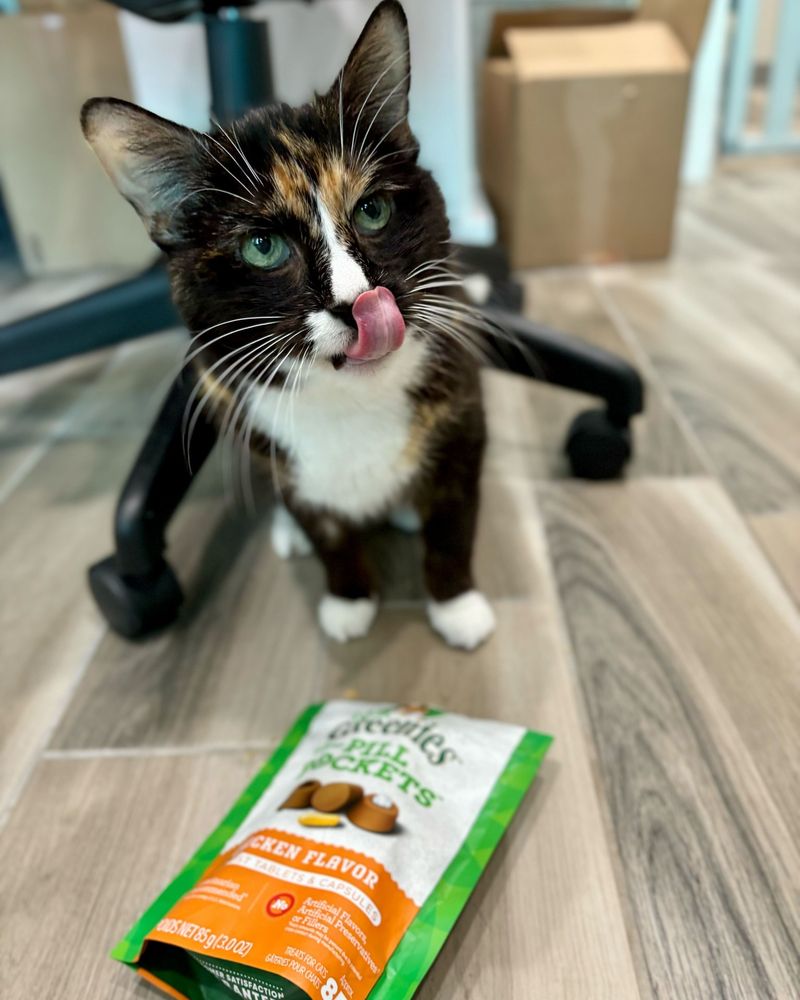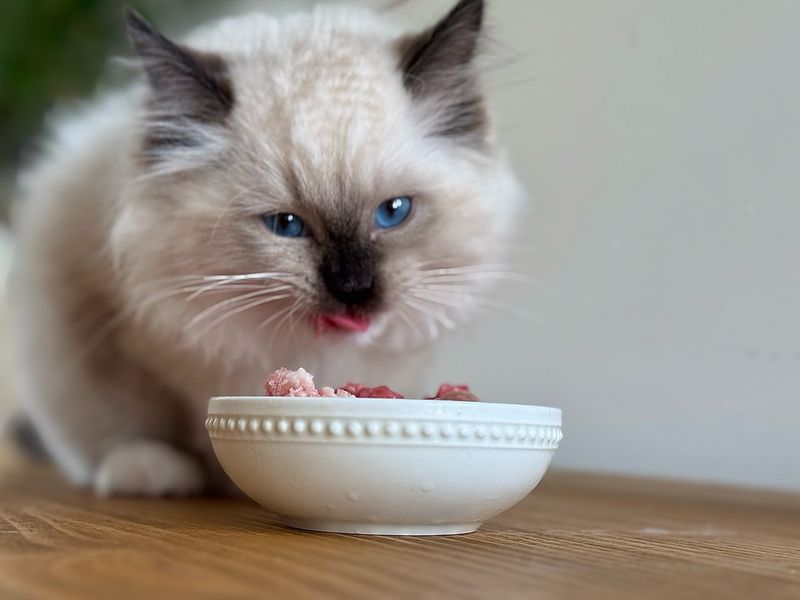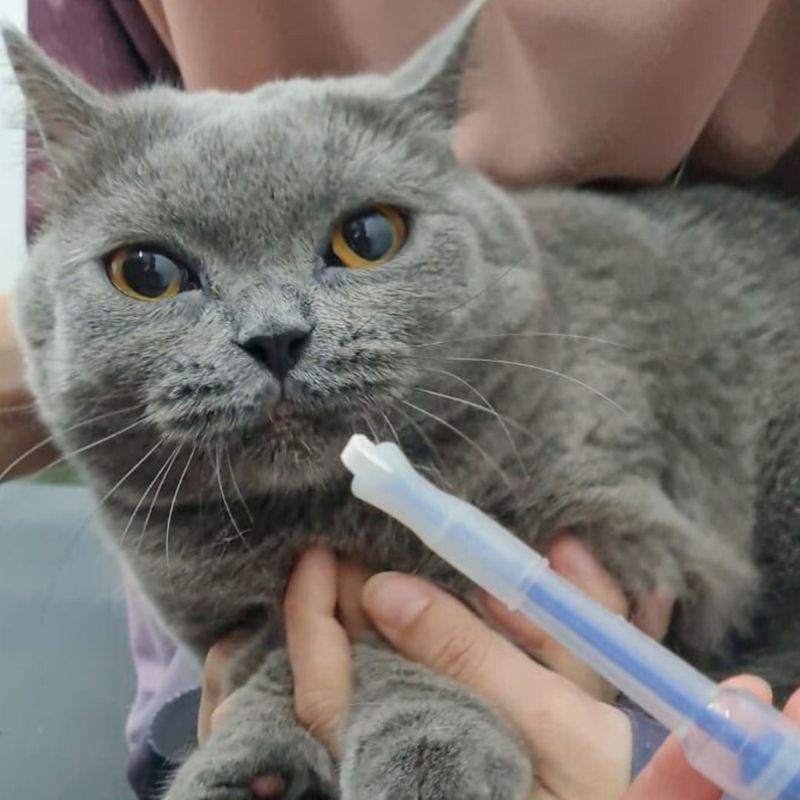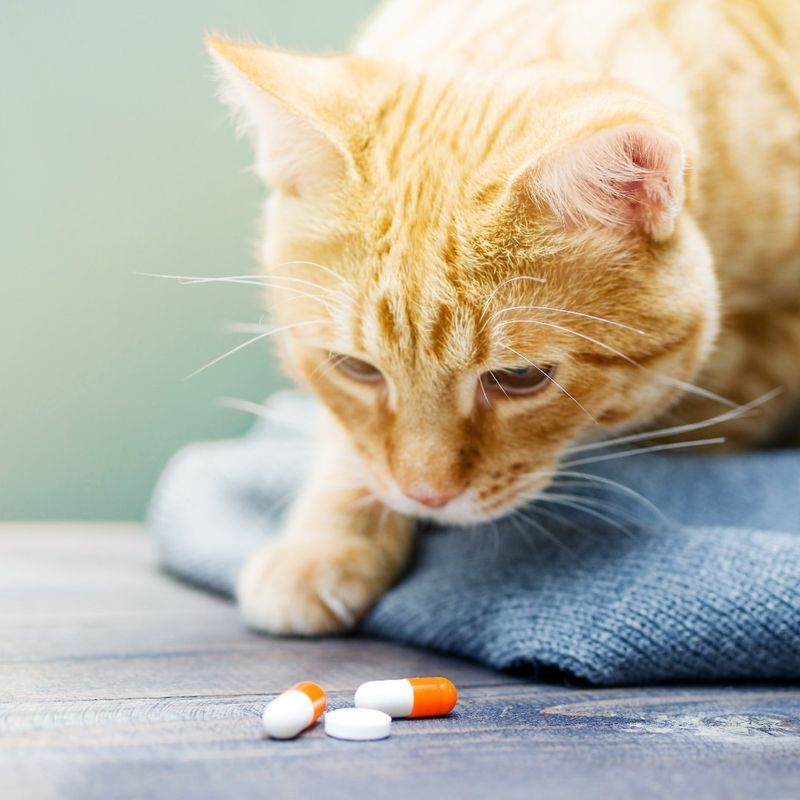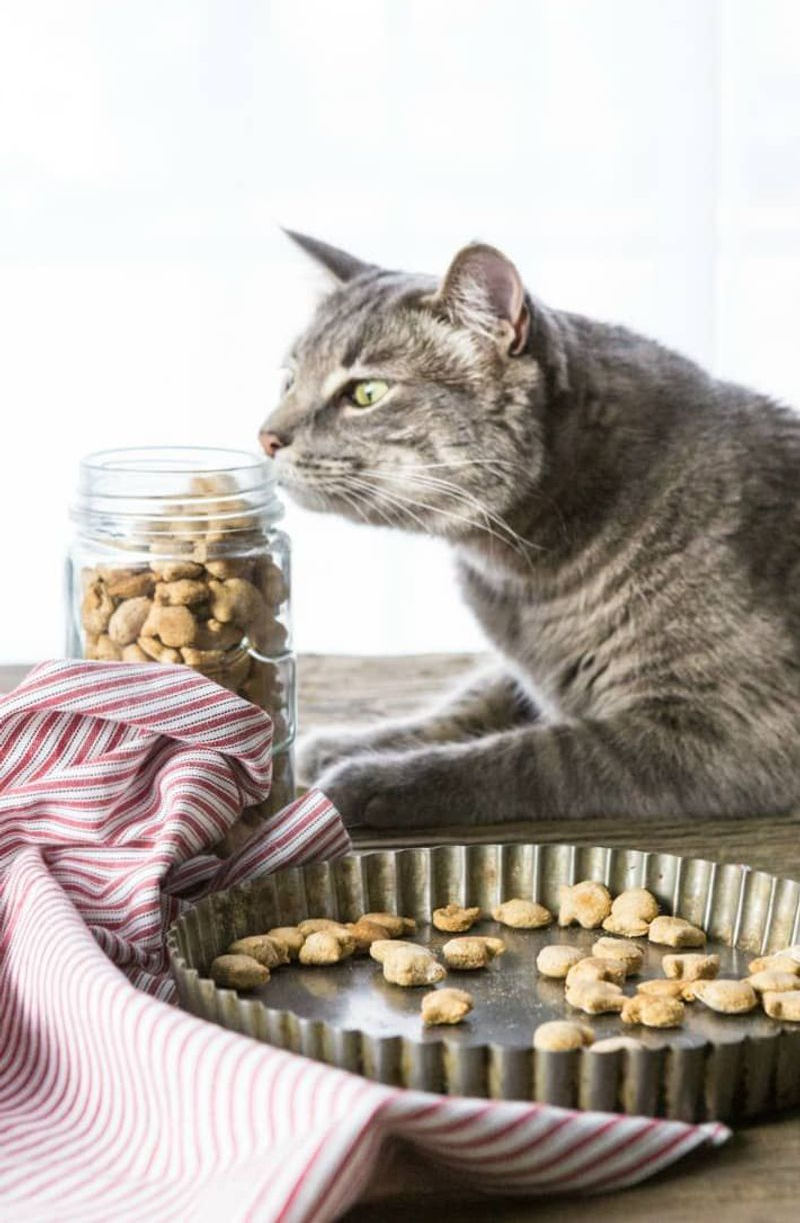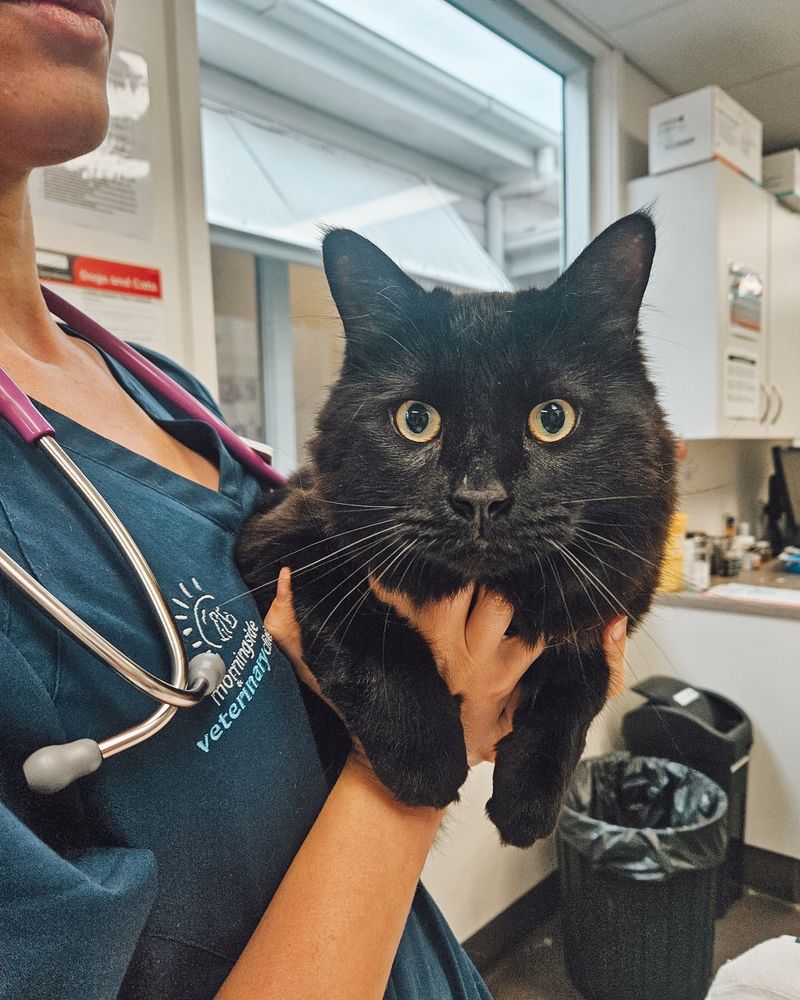📖 Table of Content:
Let’s face it—giving medicine to a cat is like negotiating with a tiny, furry dictator who’s fluent in side-eye and sass. Whether it’s a pill, liquid, or some other form of feline remedy, your cat likely has a sixth sense for what you’re trying to do and will counteract your every move.
It’s like they’ve read the playbook on “How to Avoid Taking Medicine and Stress Out Your Human.” But don’t worry; you’re not alone in this battle of wits.
The good news is there are clever ways to outsmart your picky kitty without turning your kitchen into a scene from a spy movie. From sneaky food tricks to clever tools, this guide will walk you through the best (and least stressful) methods to ensure your cat gets the medicine they need.
By the end, you’ll be armed with strategies that not only work but might even earn you a begrudging purr of approval.
1. Pill Pockets
Pill pockets are a fantastic solution for giving medicine to finicky cats. These are tasty treats with a hidden compartment for pills, making it much easier to disguise the medicine. Simply place the pill inside the pocket and offer it to your cat.
Cats are often fooled by the delicious flavor and aroma, willingly eating the treat without detecting the medicine. This method is especially effective for small pills and capsules. However, it’s crucial to ensure that your cat enjoys the flavor of the pill pocket.
Experiment with different brands or flavors if necessary, and observe your cat’s reaction. Providing pill pockets as regular treats can also make them more acceptable when they’re used for medicine. Ultimately, pill pockets can save both time and stress, turning a dreaded task into an effortless one.
2. Crushing Pills into Food
Crushing pills into your cat’s food is another effective way to administer medicine. This method works well for cats that enjoy wet food, as the strong scents and flavors can mask the taste of the medication.
Begin by consulting your veterinarian to ensure the pill can be safely crushed. If approved, mix the crushed pill thoroughly with a small amount of your cat’s favorite wet food to ensure they consume the entire dose.
Offering the medicated portion as a treat before the main meal helps in ensuring the pill is ingested. For finicky cats, trying various food flavors might increase acceptance. This approach requires some experimentation, but once a successful combination is found, it can become a reliable method for medication delivery. Remember to always supervise your cat to make sure they eat the entire portion.
3. Liquid Medicine with Syringe
Administering liquid medicine with a syringe can be a straightforward method once you get the hang of it. Liquid medicine is often easier to manage than pills, especially for cats that refuse solid forms.
Begin by filling the syringe with the prescribed dosage, and gently approach your cat. It’s essential to be calm and reassuring, as cats can sense stress. Gently hold your cat’s head and insert the syringe at the side of their mouth, aiming towards the throat.
Slowly release the liquid, allowing your cat to swallow naturally. It’s crucial to avoid forcing the medicine too quickly to prevent choking or spitting. Positive reinforcement, like petting or treats afterward, can make future administrations easier. With patience and practice, this method can become a less stressful experience for both you and your cat.
4. Mixing Medicine with Tuna Water
For many cats, the irresistible aroma of tuna can be the key to successful medicine administration. Mixing medicine with tuna water is a clever trick that can work wonders.
Start by checking with your vet if the medication can be mixed with food. If approved, drain the water from a can of tuna and mix it with the prescribed dose of medicine. Present the mixture to your cat in a shallow dish.
The strong scent of tuna often entices cats to drink it, unknowingly consuming the medicine. This method is particularly effective for liquid medications or crushable pills. However, ensure that the tuna water is free from any seasoning or oil that could be harmful. This approach not only masks the taste but also provides your cat with a tasty treat.
5. Using a Pet Piller Device
Pet piller devices can be a lifesaver for administering pills to resistant cats. These tools are designed to gently deliver the pill directly into your cat’s mouth, reducing the struggle.
To use a pet piller, load the pill into the soft tip, and calmly approach your cat. Holding your cat securely, open their mouth and place the device towards the back of the throat. Push the plunger to release the pill, then close the cat’s mouth and gently stroke their throat to encourage swallowing.
The device minimizes the risk of injury to both you and your cat, making it a safer option. Pet pillers come in various sizes, so choose one that fits your cat’s needs. With practice, this method can become a quick and efficient way to ensure your cat takes their medication.
6. Hiding Medicine in Special Treats
Hiding medicine in special treats is a creative way to trick your picky cat into taking their medication. Cats, much like humans, find certain flavors irresistible, and utilizing this can ensure successful medication delivery.
There are treats available that are specifically designed to conceal pills, providing a palatable disguise. Present these treats as a reward, and your cat is likely to gobble them up without a second thought.
It’s important to monitor your cat’s reaction to new treats, as some cats may be more discerning. If necessary, try different flavors or textures to find the perfect match. These treats can become a part of your cat’s routine, making medicine administration a stress-free experience. The key is to make the treat synonymous with a positive experience.
7. Consulting a Professional
Sometimes, consulting a professional is the best way to ensure your cat receives their medication. Veterinarians and professional pet caregivers have the expertise to make this process easier.
They can demonstrate effective techniques for administering various forms of medicine, whether it’s pills, liquids, or injectables. Observing a professional in action can provide valuable insights and boost your confidence in handling the task at home.
Additionally, they can offer personalized advice based on your cat’s specific needs and preferences. If administering medicine at home proves too challenging, some clinics offer services to do it for you. Consulting a professional not only ensures that your cat receives their medication safely but also provides peace of mind. It’s a practical option for those who struggle with at-home administration.
